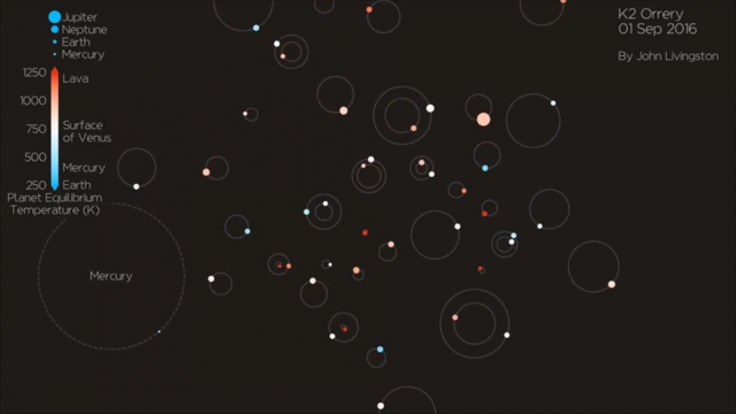NASA reveals 'Galaxy of Horrors' teasing dark side of space on Halloween
NASA releases posters showcasing deadly exoplanets.
Prowling beyond our solar system, across billions of planets and stars, there is another galaxy, "Galaxy of Horrors". Just in time for Halloween, NASA has released posters and a trailer giving a good glance at the sinister and dark side of space.
According to Jet Propulsion Laboratory's website, the two new posters celebrate the existence of petrifying exoplanets that exist outside our solar system. The posters are inspired by old-fashioned horror movie advertisements, but created with a focus on galactic audience's interest in astronomical objects.
Meanwhile, the informative and fun trailer is released using old black-and-white era style imagery finished with equally entertaining special effects. The trailer features scary and monstrous planets like HD 189733 b that exists in real, highlighting the inhospitable and horrifying atmosphere of the planet. It reveals that the atmosphere is full of rock-forming mineral silicate and the winds blowing at over 5400mph. This means that the planet is covered in a perpetual storm of flying glass. It is impossible for humans or robotic explorers to survive in such hostile conditions.
These planets are several thousand light-years away from Earth that only sophisticated telescope and advanced imaging processes can unravel. The viewers are warned of "unequalled terrors, rains of terror, and torrential rains of glass." The cobalt blue planet is nothing less than an "unearthly death trap."
These are described as the "Zombie worlds existing in the most inhospitable corner of the galaxy."
Another poster showcases three plants or dead worlds Poltergeist, Draugr and Phobetor. These planets receive stray radiation from pulsar PSR B1257+12, a collapsed, dead star. There is no way life can sustain in these worlds.
For decades, the research for exoplanets has interested many. In an attempt to discover Earth-like planets, scientists have reportedly discovered over 4000 exoplanets so far.
It’s a Galaxy of Horrors 😱
— NASA (@NASA) October 29, 2019
Free to download (if you're brave enough), our new @NASAExoplanets posters reveal the sinister science behind real worlds we’ve discovered in our galaxy. Get the posters… they’re killer! #Halloween19 https://t.co/mfGvxqrG39 pic.twitter.com/YaC3TT1hMk
"People are often most interested in finding exoplanets that could resemble Earth or potentially support life as we know it," said Thalia Rivera, an outreach specialist at JPL contributing to the development of the new poster series. "But there are so many other amazing, mystifying planets out there that are completely unlike Earth and that show us the huge variety of ways planets can form and evolve. My favorite thing about exoplanets is how extreme they can get!" she added.

NASA's "Galaxy of Horror" series is a collaborative effort of scientists and artists working together with NASA's Exoplanet Exploration Program Office, the program that supports NASA's search for exoplanets.
© Copyright IBTimes 2025. All rights reserved.





















